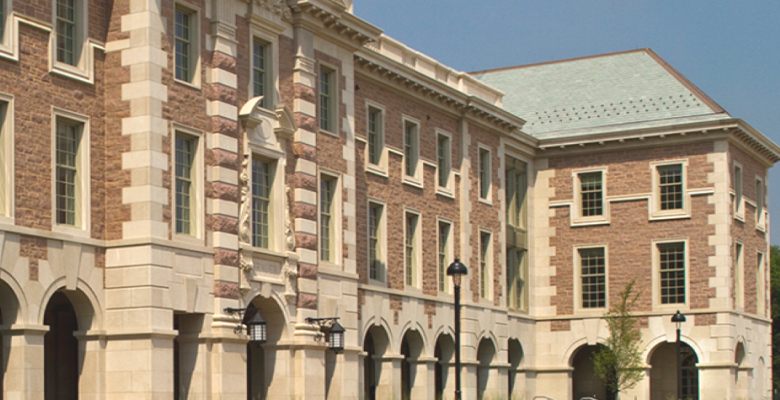Square Feet: 134,556 | 25%+ in overall electrical savings and 44.1% on heating.
Located at Washington University in St. Louis, the Stephen F. and Camilla T. Brauer Hall is a LEED Gold certified building that was completed in 2010 and is 134,556 ft2. This building is home to the university’s Department of Energy, Environmental & Chemical Engineering. About 36% of the building is designated Lab space and another 30% is dedicated office space. The rest of the space is made up of hallways, mechanical rooms, and miscellaneous spaces.
The University hired Energy Resource Group to conduct Audit and RCx studies, to advise on implementation, and to measure and verify savings from implemented recommendations. The Audit and RCx uncovered fifteen energy efficiency measures. At the time when this case-study was written, six of the measures had been implemented, measured, and verified. The University measures each buildings energy use with three submeters: 1) building electrical energy use; 2) chilled water energy use; and, 3) hot water energy use. These measures generate energy savings of 22.5% in building electric costs, 32.1% in electric cooling costs, and 44.1% on heating costs. The combined simple payback for these projects is 2.20 years.
RCx often aims to reduce unnecessary airflow, and this is where the most savings were made. The study showed that many lab areas of the building were being over-ventilated requiring increased intake and conditioning of make-up air. Figure 1 shows the air flow before implementation and Figure 2 shows the air flow after implementation. The ventilation of these spaces was reduced to what is required in the ASHRAE 62.1 and ANSI Z9.5 standards.
The number of air changes per hour (ACH) was also reduced further from 6 to 4 when the space was not occupied. Occupancy sensors were used to manage air changes as well as to turn off non-emergency lighting in the mechanical room located in the penthouse when no people were present.
Other EEMs included a wind study and controls to tailor exhaust velocity to local wind conditions, adding a VFD to a CRAC air handling unit (AHU), and optimizing its temperature controls to reduce subcooling and electric reheat.
Analysis of the utility bills before and after show a total electrical reduction of 1,645,000 kWh and gas reduction of 70,200 Therms. This translates into an annual cost savings of $148,600, a 25% total reduction in electrical consumption, and 44% reduction in heating consumption. 
Figures 3 and 4 show the before and after Btu/h vs temperature. The red trendlines show the higher energy consumption in 2014 before the implemented EEMs and the blue trendlines show the reduced consumption in 2017 after the implemented EEMs.
Energy Resources Group worked with utility providers to secure incentives for the EEM’s. In the case of Brauer Hall, ERG helped to secure $46,500 in incentives from Spire gas and $60,800 from Ameren Electric for a total of $107,300. These incentives reduced the payback period from 3.00 years to 2.28 years. Retro-Commissioning is usually defined as having a year and a half payback, but ERG studies identify other clients often invest beyond that extremely
Washington University has taken the initiative to take avoided greenhouse gas emissions into their NPV (Net Present Value) decision-making process for energy efficiency. This includes a valuation for CO2e emissions at $39/ton. This project avoids 2,018 tonnes of CO2e for an additional cost savings of $78,800.
Note: This case study looked at the recommended RCx measures that had been implemented, measured and verified in early 2018, and was updated in 2020 with estimated energy savings from exhaust fan turndown which was implemented in 2019.
note: the title photo of Brauer Hall is used courtesy of Washington University.







